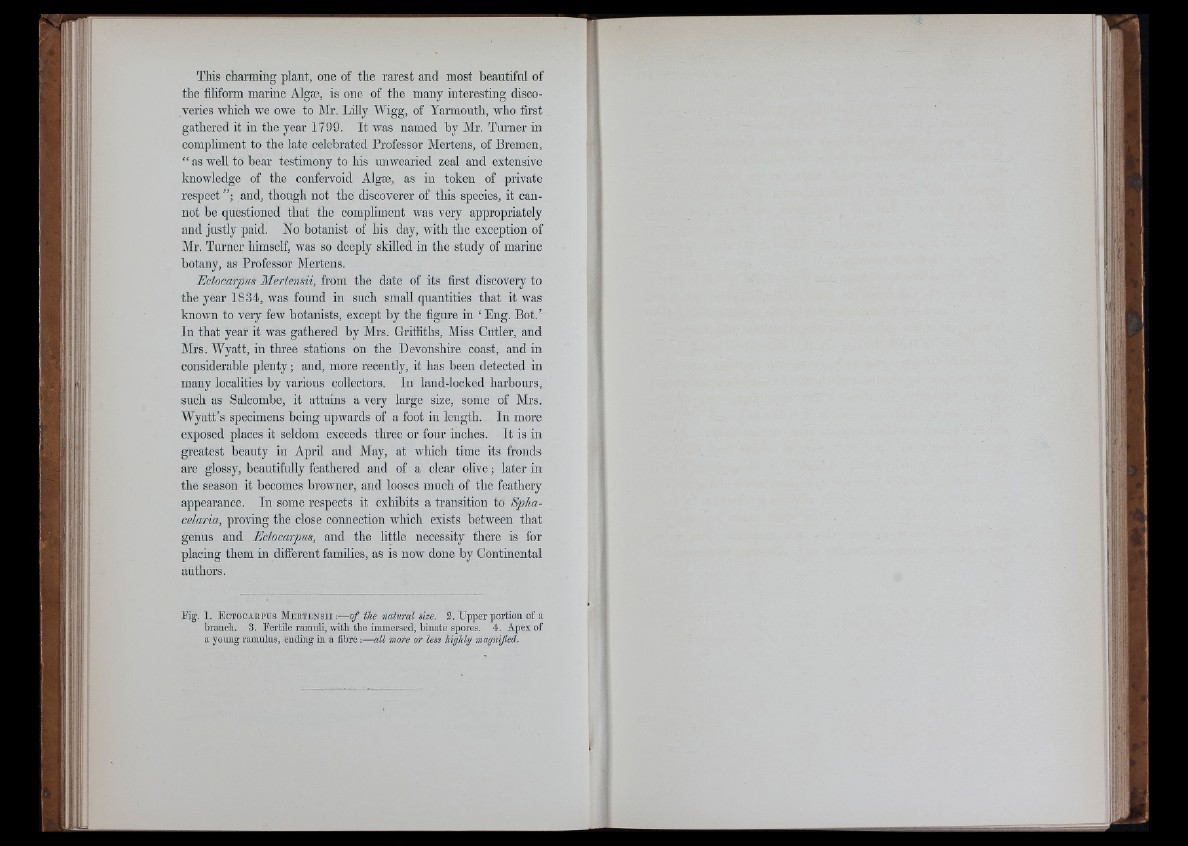
i ’
This charming plant, one of the rarest and most beautiful of
the filiform marine Algaq is one of the many interesting discoveries
which we owe to Mr. Lilly Mrigg, of Yarmouth, who first
gathered it iu the year 1799. It was named by Mr. Turner in
compliment to the late celebrated Professor Mertens, of Bremen,
“ as well to bear testimony to bis unwearied zeal and extensive
knowledge of the confervoid Algse, as in token of private
respect” ; and, though not the discoverer of this species, it cannot
he questioned that the compliment was very appropriately
and justly paid. No botanist of his day, with the exception of
Mr. Turner himself, was so deeply skilled in the study of marine
botany, as Professor Mertens.
Ectocarpus Mertensii, from the date of its first discovery to
the year 1834, was found in such small quantities that it was
known to veiy few botanists, except by the figure in ‘ Eng. Bot.’
In that year it was gathered by Mrs. Griifiths, Miss Cutler, and
Mrs. Wyatt, in three stations on the Devonshire coast, and in
considerable plenty; and, more recently, it has been detected in
many localities by various collectors. Iu land-locked harbours,
such as Salcombe, it attains a very large size, some of Mrs.
Wyatt’s specimens being upwards of a foot in length. In more
exposed places it seldom exceeds three or four inches. It is in
greatest beauty in April and May, at which time its fronds
are glossy, beautifully feathered and of a clear olive; later in
the season it becomes browner, and looses much of the feathery
appearance. In some respects it exhibits a transition to Spha-
celaria, proving the close connection which exists between that
genus and Ectocarpus, and the little necessity there is for
placing them in different families, as is now done by Continental
authors.
Fig. 1. E ctocakpus Me k t e n s ii :— o f the natural size. 2. Upper portion of a
brancli. 3. Fertile ramuli, witb tbe immersed, binate spores. 4. Apex of
a young ramulus, ending in a fibre;— all more or less highly magnified.